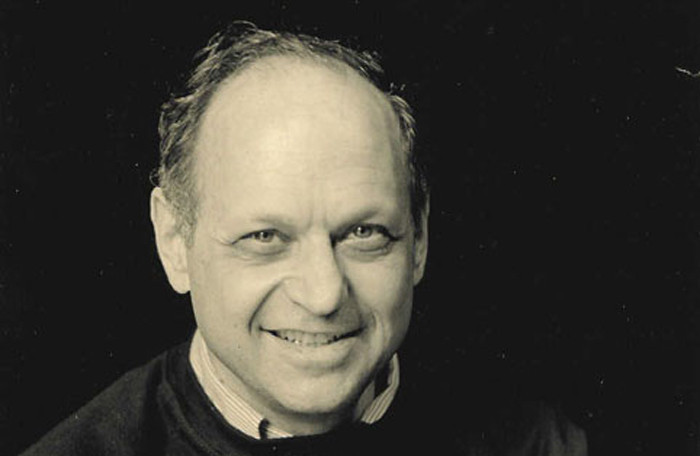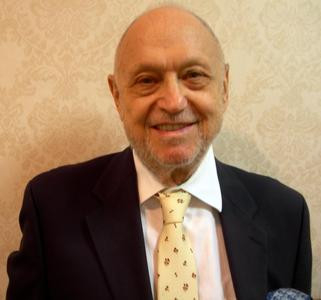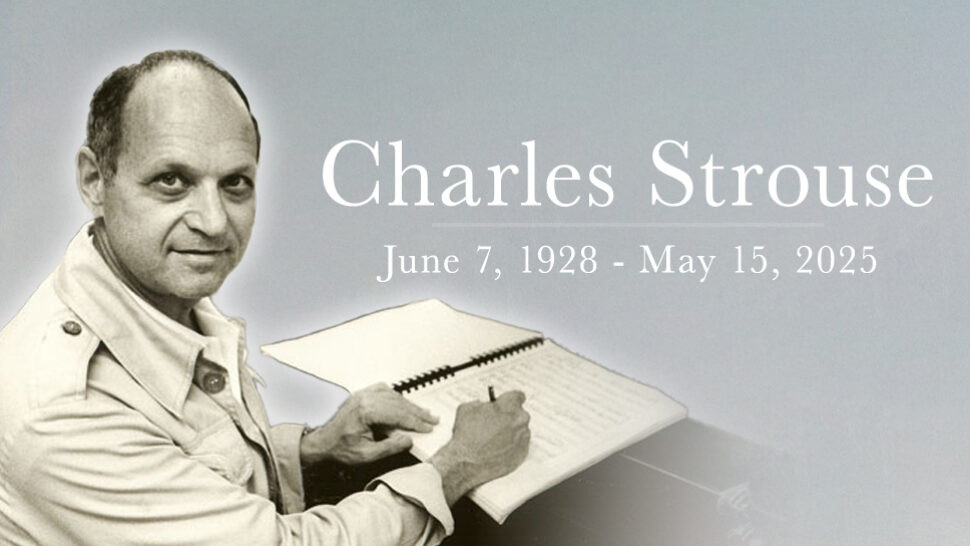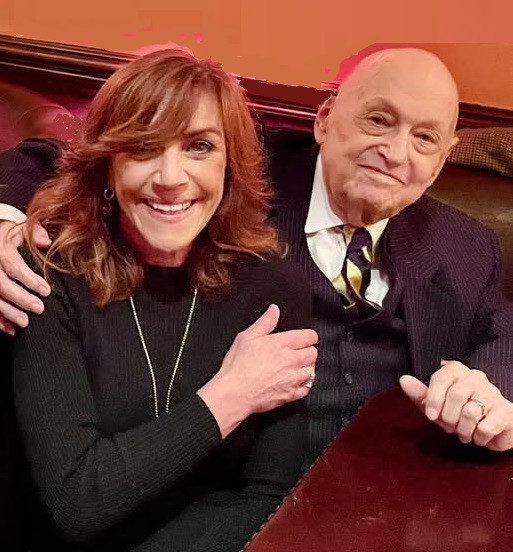Charles Strouse, an accidental Broadway composer whose work — including hits like “Annie” and “Bye Bye Birdie” — earned him three Tony Awards, a Grammy, and an Emmy, died on Thursday at his home in Manhattan. He was 96.
The death was confirmed by Jim Byk, a spokesman for his family.
Mr. Strouse had more than a dozen Broadway shows to his credit and composed some of the most enduring musical theater numbers of his era: “Put On a Happy Face” and “Kids (What’s the Matter With Kids Today?)” from “Bye Bye Birdie,” which opened in 1960 and featured lyrics by his frequent collaborator Lee Adams; “But Alive” from “Applause” (1970), a musical adaptation of the movie “All About Eve” starring Lauren Bacall, with lyrics by Mr. Adams; and “Tomorrow” and “It’s the Hard-Knock Life” from “Annie” (1977), with lyrics by Martin Charnin.
All three shows earned Tonys for Mr. Strouse — “Birdie” and “Applause” for best musical, and “Annie” for best original score. Both “Birdie” and “Annie” were made into hit movies.
Andrea McArdle, was in the title role, with Sandy Faison and Reid Shelton in “Annie.” Mr. Strouse’s biggest hit opened on Broadway in 1977 and ran for almost six years.
Lauren Bacall starred in “Applause” (1970), which, like “Bye Bye Birdie,” won Mr. Strouse and Mr. Adams the Tony for best musical.
Mr. Strouse’s music has been recorded by Frank Sinatra, Barbra Streisand, Duke Ellington, and Jay-Z, who sampled the corresponding number from Broadway’s “Annie” on his 1998 rap single “Hard Knock Life (Ghetto Anthem).”
Some of Mr. Strouse’s numbers became so ubiquitous that they seemed revered and reviled by the public in equal measure. Each response in its own way was a badge of honor.
There was the time, for instance, that a stranger accosted Mr. Strouse at a party.
“If I have to hear my daughter sing ‘Tomorrow’ one more time,” he thundered, “I’m going to kill myself — and you!”
ImageA black-and-white photo of Sammy Davis Jr., a thin man with slicked-back hair and a mustache, standing in front of a theater displaying a poster with a drawing of him. He wears a white dress shirt and a loosened tie but no jacket.
Four years after they struck Broadway gold with “Bye Bye Birdie,” Mr. Strouse collaborated with Mr. Adams on “Golden Boy,” starring Sammy Davis Jr.Credit...Silver Screen Collection/Getty Images
Mr. Strouse’s other Broadway collaborations with Mr. Adams included “All American” (1962), starring Ray Bolger, with a book by Mel Brooks; “Golden Boy” (1964), based on a play by Clifford Odets, starring Sammy Davis Jr.; and “It’s a Bird … It’s a Plane … It’s Superman” (1966), an adaptation of the comic book written by Robert Benton (who died this month) and David Newman, which starred Jack Cassidy, with Bon Holiday in the title role. He also wrote both music and lyrics for “Mayor” (1985), an adaptation of the memoirs of Mayor Edward I. Koch.
He wrote scores for films as well, including “Bonnie and Clyde” (1967) and “The Night They Raided Minsky’s” (1968. For television, he composed the music for “Those Were the Days,” the opening theme of Norman Lear’s groundbreaking sitcom “All in the Family,” with lyrics by Mr. Adams. (It is Mr. Strouse’s piano playing that is heard on the soundtrack as Archie and Edith Bunker sing the song on camera.)
Mr. Strouse’s résumé is all the more noteworthy in that, trained under such eminences as Nadia Boulanger, David Diamond and Aaron Copland, he had fully intended to be a composer of concert music.
The son of Ira Strouse, a traveling salesman, and Ethel (Newman) Strouse, a homemaker and amateur pianist, Charles Louis Strouse, familiarly known as Buddy, was born in New York City on June 7, 1928, and grew up on the Upper West Side of Manhattan.
He realized early, he said, that he would be obliged to lighten his dark household with his academic and musical achievements. His father was plagued by a range of serious health problems; his mother, chronically depressed, often threatened suicide and eventually spent more than two years in a psychiatric hospital.
Editors’ Picks
How the Rubik’s Cube Taught Me to Be a Better Parent
Jalapeño Wine Delights TikTok but Confuses Bartenders
Is It Ethical to Buy Used Books and Music?
Image
A photograph of a mantel with a copy of Mr. Strouse’s book on top of it. The cover of the book shows him writing on a sheet of music paper while standing and looking at the camera.
“Put On a Happy Face” was the name of both one of Mr. Strouse’s best-known songs and his memoir, published in 2008.Credit...Ruth Fremson/The New York Times
Among the few truly happy times the Strouses enjoyed as a family, Mr. Strouse recalled in his 2008 memoir, “Put On a Happy Face,” were when they gathered around the piano to sing the latest popular standards as his mother played.
Years later, when it came time for Mr. Lear to devise the credit sequence for “All in the Family,” Mr. Strouse gave him the idea of having its stars, Carroll O’Connor and Jean Stapleton, seated at the piano in a similar tableau.
Image
A black-and-white photo of Mr. Strouse standing at the front of a piano and leaning on it with both hands. The hammers are visible.
Mr. Strouse in 1986. Trained under such eminences as Nadia Boulanger, David Diamond and Aaron Copland, he had originally intended to be a composer of concert music.Credit...Damian Strohmeyer/The Denver Post, via Getty Images
Charles took up the piano at 10, and at 15, after graduating from what was then Townsend Harris Hall, a Manhattan public high school, entered the Eastman School of Music in Rochester, N.Y. He majored in composition and earned a bachelor’s degree there in 1947.
“The direction of a melodic line, the stringency and resolution of a harmony — they were riddles to me that I wanted to spend my whole life solving,” Mr. Strouse wrote in his memoir.
Returning to Manhattan, he studied privately with Mr. Diamond and spent several summers working with Mr. Copland at Tanglewood. In 1950, he received a scholarship to study in Paris with Ms. Boulanger, whose students had included some of the most distinguished composers of the 20th century.
After he had worked with her for a time, Ms. Boulanger informed Mr. Strouse that he had a talent for light music. He was crushed, he recalled, until she told him that “to make someone forget illness and suffering is also a calling.”
It was as if, Mr. Strouse later wrote, she had been able to peer directly into his childhood home.
By that time, fate had already intervened in the person of Mr. Adams, whom Mr. Strouse had met at a party in late 1949. Although Mr. Strouse had little interest in musical theater then, the two made an offhand vow to collaborate.
Image
In a black-and-white photo, Mr. Strouse sits at a piano with his legs crossed, his right hand on his knee and his left hand gesturing. Mr. Adams stands behind him, adjusting his glasses with his right hand.
Mr. Adams, standing, with Mr. Strouse in 1972. In addition to “Bye Bye Birdie,” “Golden Boy” and “Applause,” their collaborations included the theme for the sitcom “All in the Family.”Credit...Bentley Archive/Popperfoto, via Getty Images
“I didn’t expect much to come out of it,” Mr. Strouse later said.
On returning from Paris to New York, Mr. Strouse made ends meet by playing piano wherever he could: for dance rehearsals; in strip clubs (“Continuous Stripping Plus Buddy Strouse and His Band,” an advertisement read); and as an accompanist for the actress and singer Butterfly McQueen on a concert tour of the South. He also worked briefly for Fox Movietone News, writing background music for newsreels.
His first significant work as a composer of popular songs came in 1952, when he joined Mr. Adams at Green Mansions, a summer resort in the Adirondacks. The resort was famed for its Saturday-night revues, for which Mr. Strouse and Mr. Adams wrote original songs.
“Suddenly,” Mr. Strouse recalled, “people were walking out of the theater humming my tunes.”
The number that became “Put On a Happy Face” had its origins in one of their Green Mansions shows.
In the coming years, the pair contributed songs to several well-received Off Broadway revues, including “The Littlest Revue,” which opened in 1956 and starred Charlotte Rae, Joel Grey and Tammy Grimes.
Then, in the late 1950s, along came “Birdie.”
To hear Mr. Strouse tell it, the show’s premise was preposterous. Originally titled “Let’s Go Steady,” it centered on teenagers — not the leather-jacketed urban toughs that since 1957 had been tearing up Broadway in “West Side Story,” but pubescents of the poodle-skirted type, cut from clean, anodyne Middle American cloth.
Image
A performer in a gold lamé suit, his hair piled high, stands in the middle of a crowd of screaming and swooning teenagers, bending his knees and moving his hips.
Dick Gautier played Conrad Birdie, a very Elvis Presley-like rock ‘n’ roll star, in “Bye Bye Birdie” (1960), Mr. Strouse’s first Broadway show.Credit...via Photofest
Based on the recent history of Elvis Presley, lately United States Army Private 53310761, the proposed musical followed the fortunes of a fictional pop star, Conrad Birdie — a play on the name of the country singer Conway Twitty, himself a rock ‘n’ roll star at the time — and his legions of adoring fans as he decamped for service.
The show hoped to capitalize on the current craze for rock ’n’ roll. But by his own admission, Mr. Strouse knew little of rock ’n’ roll and cared for it even less.
To make matters worse, the cast featured a bevy of relative unknowns, among them the nightclub singer Dick Gautier as Conrad and, as Conrad’s manager, a little-heralded actor named Dick Van Dyke.
Dubious but also impecunious, Mr. Strouse and Mr. Adams signed on. Over the next two years, while the fledgling “Birdie” was making the rounds of backers’ auditions, Mr. Strouse worked as an assistant to Frank Loesser, the titan who had written music and lyrics for “Guys and Dolls,” among other hits.
“Bye Bye Birdie” opened on Broadway on April 14, 1960. When someone read him the review by Brooks Atkinson in The New York Times the next day, Mr. Strouse fainted. It was not from joy.
“As a production,” Mr. Atkinson had written, “‘Bye Bye Birdie’ is neither fish, fowl nor good musical comedy.”
Mercifully, other New York papers (the city was then glorious home to seven English-language dailies) were kinder. The show ran for 607 performances — a more-than-respectable tally at the time.
Mr. Strouse would outdo that figure with “Applause,” which had a book by Betty Comden and Adolph Green and starred Len Cariou, Penny Fuller and Bonnie Franklin in support of Ms. Bacall; it ran for 896 performances. He outdid “Applause” with “Annie,” written by Thomas Meehan, based on the venerable comic strip “Little Orphan Annie” and starring Andrea McArdle in the title role, with Dorothy Loudon as her nemesis, Miss Hannigan, and Reid Shelton as Daddy Warbucks; it closed in 1983 after 2,377 performances.
Not all of Mr. Strouse’s ventures were successful. “Bring Back Birdie,” a 1981 sequel, closed on Broadway after four performances. Two “Annie” sequels, “Annie 2: Miss Hannigan’s Revenge” and “Annie Warbucks,” closed out of town before reaching Broadway. The 1991 musical “Nick & Nora,” with a book by Arthur Laurents, lyrics by Richard Maltby Jr. and a cast featuring Barry Bostwick and Joanna Gleason as Dashiell Hammett’s detectives Nick and Nora Charles, played just nine Broadway performances.
Such are the vagaries of Broadway that even when Mr. Strouse’s music was critically praised, it was not always enough to sustain a show. That was the case with “Rags,” his 1986 musical about Jewish immigrants in early-20th-century New York, with a book by Joseph Stein and lyrics by Stephen Schwartz. Starring the operatic soprano Teresa Stratas, it closed after four performances.
Image
A black-and-white stage set with a large model of the Statue of Liberty looming over a group of people crowded onto what looks like the deck of a ship.
“Rags,” Mr. Strouse’s 1986 collaboration with Stephen Schwartz and Joseph Stein, closed after four performances. “The ‘Rags’ that might have been,” Frank Rich wrote in The New York Times, “is best heard in Mr. Strouse’s score.”Credit...Photofest
“The ‘Rags’ that might have been,” Frank Rich lamented in his review in The Times, “is best heard in Mr. Strouse’s score.”
Mr. Strouse’s honors included a Grammy Award for the “Annie” cast album; an Emmy, with Mr. Adams, for a 1995 television production of “Bye Bye Birdie,” starring Jason Alexander; and the Richard Rodgers Award for lifetime achievement from the American Society of Composers, Authors and Publishers.
He was the founder, in 1979, of the ASCAP Musical Theater Workshop, which trains aspiring composers and lyricists.
Mr. Strouse’s survivors include his children, Benjamin, Nicholas, Victoria and William Strouse, as well as eight grandchildren. His wife, Barbara Siman, a choreographer, died in 2023 after 61 years of marriage.
Throughout his long, successful career, Mr. Strouse never lost sight of the myriad anxieties that attend his calling. He was perhaps never more keenly aware of them than in March 1960, when “Bye Bye Birdie” opened in Philadelphia for its pre-Broadway tryout.
As the curtain rose, Mr. Strouse, Mr. Adams and Michael Stewart, who wrote the book, paced the lobby of the theater like expectant fathers. When the curtain rang down, to what Mr. Strouse considered “minimal applause,” he could bear it no longer.
He made for a broom closet under the lobby’s grand staircase.
“I was so nervous I went to hide,” Mr. Strouse told The Times in 2009. “I opened the door and heard a growl. It was Mike. He was already in there.”
Ash Wu contributed reporting.
Margalit Fox is a former senior writer on the obituaries desk at The Times. She was previously an editor at the Book Review. She has written the send-offs of some of the best-known cultural figures of our era, including Betty Friedan, Maya Angelou and Seamus Heaney.
ADVERTISEMENT
BY
Looking for more information?

 Amanda S. Stevenson
Amanda S. Stevenson 
 Amanda S. Stevenson
Amanda S. Stevenson 
 Amanda S. Stevenson
Amanda S. Stevenson 
 Amanda S. Stevenson
Amanda S. Stevenson 
 Amanda S. Stevenson
Amanda S. Stevenson 
 Amanda S. Stevenson
Amanda S. Stevenson 